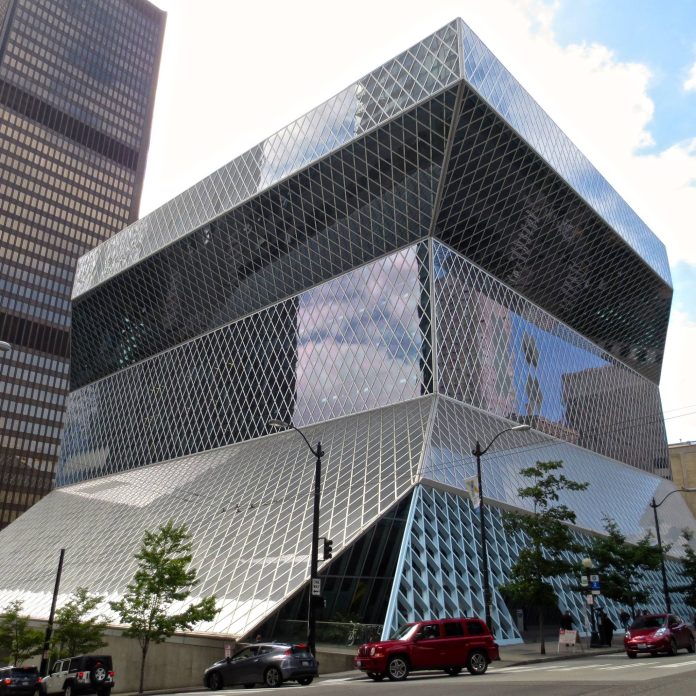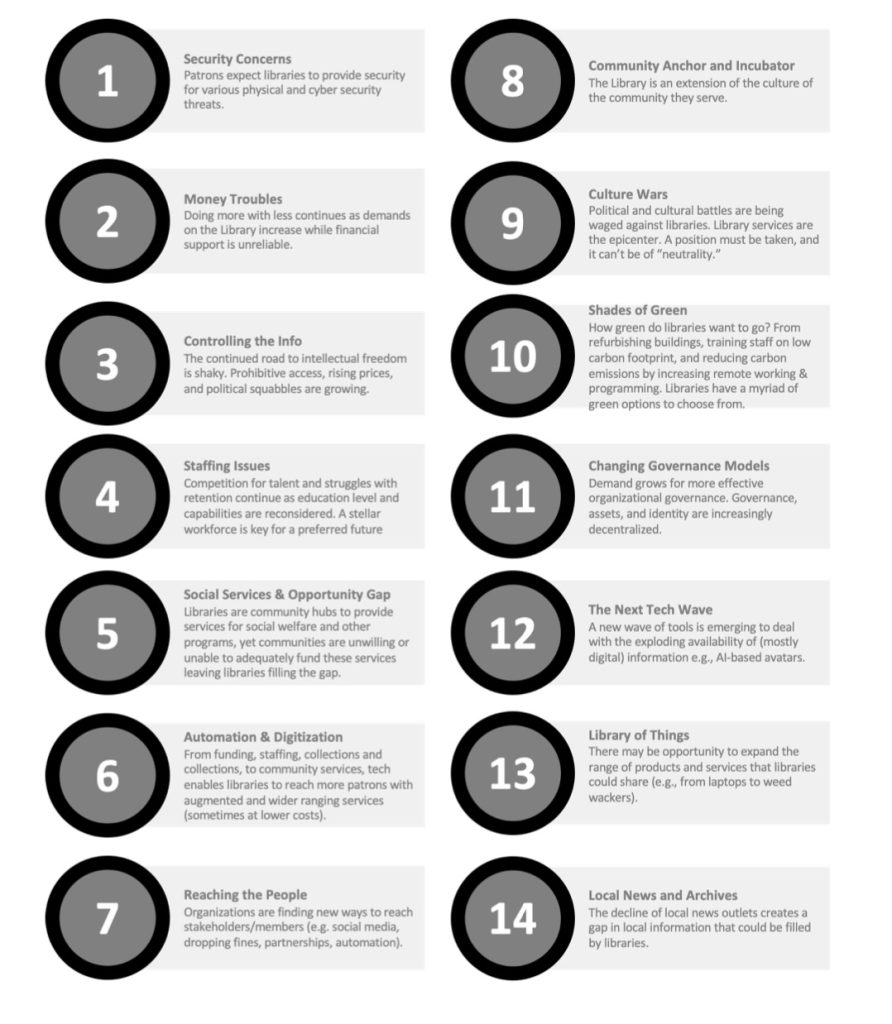At its core, the strategy is built on the idea that “the library makes a difference in people’s lives and in the greater community.”
All branches of the Seattle Public Library closed this past Tuesday for a city-wide staff meeting. The organization was brought together to review the system’s new Strategic Direction. SPL is engaged in a process of laying out its programs and values for the next decade, and where it fits in a world shaped by the disruptive technologies, environment, and censorship that’s now part of our everyday lives.
Set in motion with funding through the 2019 Seattle Library levy, the new Strategic Direction initiative has moved through several phases. SPL engaged University of Houston Foresight program to identify the potential future of libraries and what steps are necessary to achieve them. Through that, over 50 stakeholders and partner organizations provided feedback through workshops and surveys. Now, with consultants Territory North America, the system moves into a phase of creating implementable steps.
This is the messy middle of the strategic planning process, according to Laura Gentry, Seattle Public Library’s Head of Communications. “This is the part where we’re starting to identify some core themes. But now we need to socialize those core themes among the people that are going to have to carry out all the work.”
Seattle has the second largest public library system in the state of Washington, running about half the circulation of surrounding King County. (Combined, they would lap the nation’s largest system in New York City.) Just over half of SPL’s $88 million budget comes from the city’s general fund, a third from the voter-approved Library Levy, and the rest a combination of grants. Two-thirds of that budget pays for the system’s 700 employees, with the rest divided among buying materials and building upkeep.
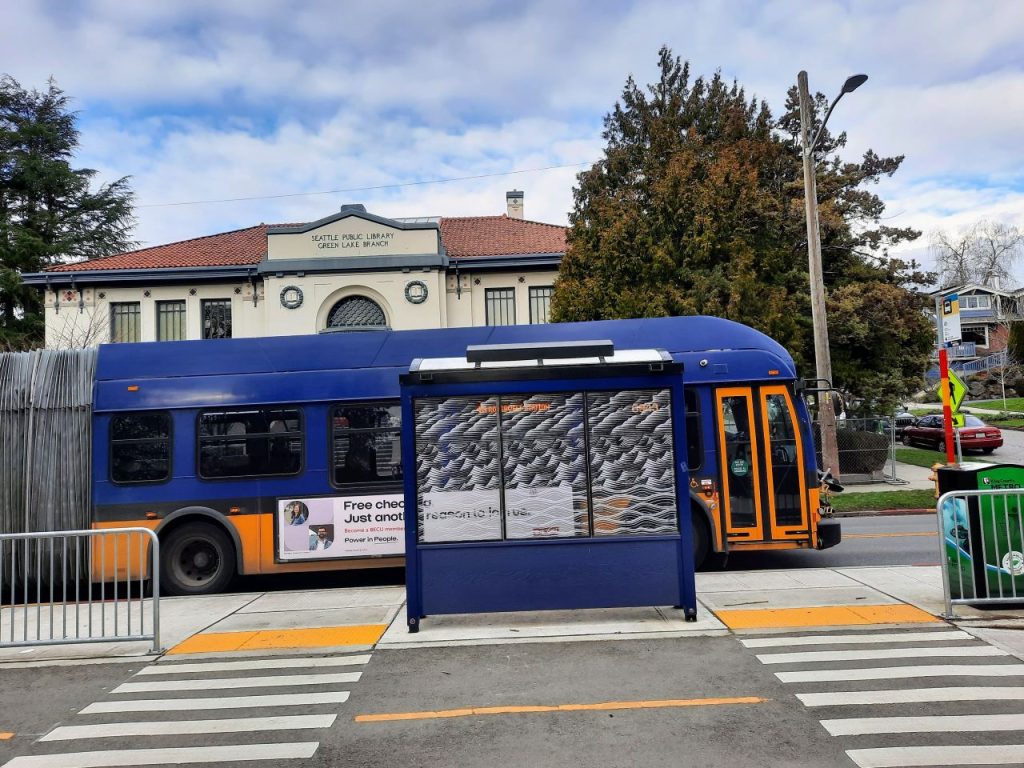
It’s those employees in each of the system’s 27 locations who will be carrying out the implementation of any library plan. “We do start a lot of really cool ideas at the library that then become really challenging to scale to 27 locations across the city.” Gentry says, adding there is a need to zoom out “and identify what is the community role here? What are people asking us to do? How do we define what the impact is that we want to have in the community based on those needs, and then, how do we allocate our resources to do that?”
It’s that scalability that makes it too early to determine if new (or fewer) branches will come out of this library planning process.
“We haven’t had those kinds of concrete conversations yet,” Gentry says. “We haven’t come to any kind of strong conclusions about physical spaces, we haven’t even really discussed it. But I imagine that we’re going to be having a lot of very reflective conversations about everything that we do, to make sure that what our strategic plan says we want to accomplish — that we can actually accomplish it.”
SPL’s current strategic direction was developed in 2017 and reupped in 2020, and included a number of goals like access, community engagement, and establishing measurable metrics. At its core, the system built the direction around the idea that “the library makes a difference in people’s lives and in the greater community.”
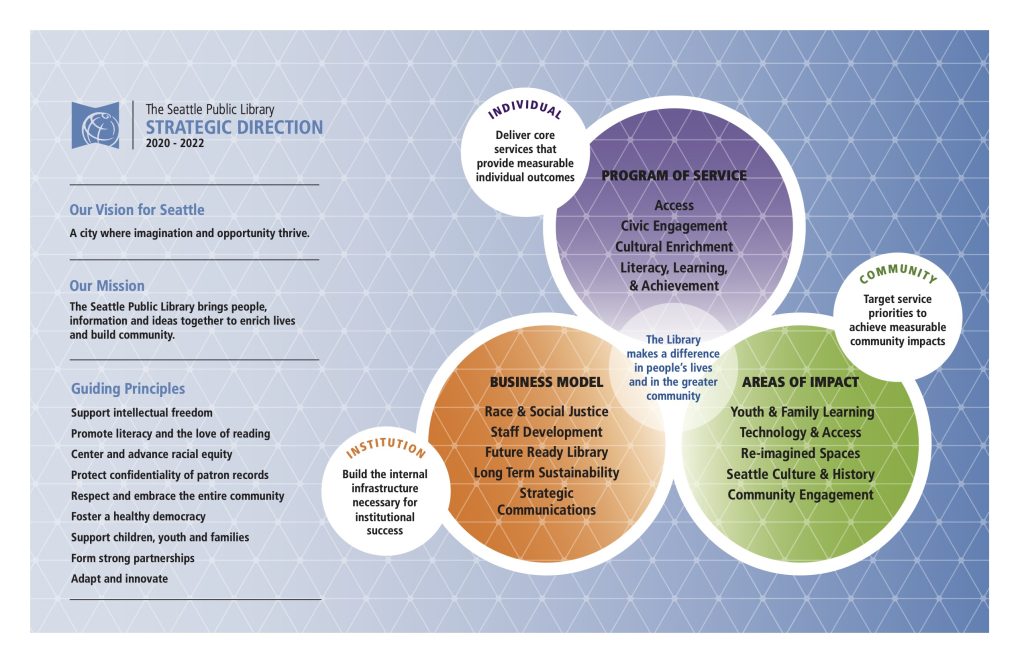
Gentry also sees the new strategic plan process as a test for what she calls “library bias,” or the traditional library way of doing things. An example she used was charging overdue fines.
“For many, many years, our bias was that by applying a fine every day until you brought that material back was going to be an incentive to bring that material back on time,” she said. “Once we did conduct a test to identify the impact of that thinking, we saw where the impact was landing was on disenfranchised communities. Folks who are already struggling are struggling more because of this policy. And so we took that policy away and received a lot of concern from folks who thought that the books won’t come back, or I’m gonna have to wait longer to get my books. That did not happen. The return rate is the same as it’s always been, and we were able to reinstate 18,000 accounts, so increasing library access across the board.”
The Future of Libraries
One thing that was not included in SPL’s last Strategic Direction is the library branch’s role as a neighborhood anchor in the turmoil of a global pandemic or its focal point in the culture wars. But the last four years has seen both of those things, with free Covid tests in the lobby and protests about Drag Story Times. While it doesn’t appear that these threats should apply to very liberal Seattle’s jewel of a library system, these are important constraints facing the organization because they change the concept of libraries.
That University of Houston Foresight report included a lot of very interesting observations, identifying a number of drivers of change facing the system going beyond Covid and conservative grifts. Funding models, including voter approved levies, create unstable revenues. Staffing issues stem from demanding librarians serve patrons needing social as well as information services. Straight up censorship is exacerbated by reduced access to information because of the rising costs of journals, e-books, and other corporate controlled intellectual property.
The Houston group produced a couple possible outcomes, including a preferred one. The Taking a Stand alternative sees libraries taking a stand for community values, but facing increased competition from fragmented and very biased competitors. The Trusted Third Space alternative leans on technology to offer a lot of services, but without some social services and at a pretty hefty expense requiring new funding. The preferred scenario is called Ecosystem Anchor where the library becomes a green hub for community organizations with other parts of city government operating social services with the library as liaison.
They’re all pretty cool, and quite visionary. What’s different about this analysis from many others is that the possible outcomes were set out at the 10-year horizon, then the authors included midpoint scenarios before getting to that final mark. These interstitial scenarios ask what happens as the library applies its values to all the steps happening in the meantime. It doesn’t yadda-yadda-yadda over the difficult path to get to a preferred goal and crosswinds that stand in the way. Or, put another way, it answers the question of precisely how one profits from stealing underpants.
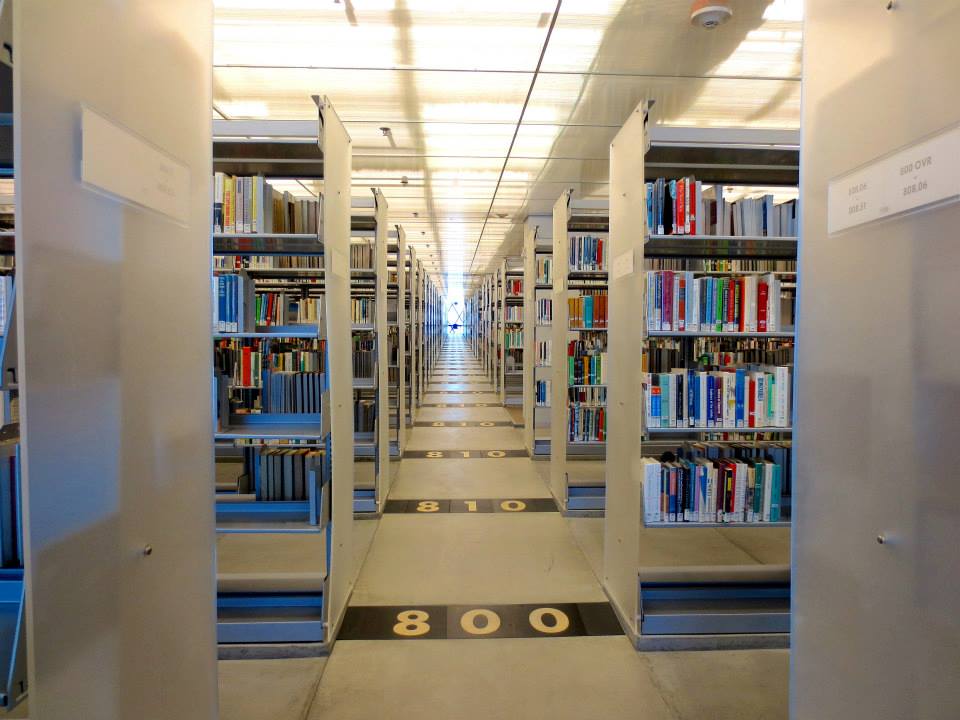
The two midpoint scenarios emphasize the importance of getting transitions right. The collapsing Libraries for Some scenario sees the unstable funding of levies as a primary threat, forcing the library to go mostly virtual in a cost-cutting spree. Culture war nonsense puts staffing under a microscope, tight budgets close branches, and new hires are mostly security. Alternately, the Pushing the Limits scenario embraces the library’s value to be at the core of the community. Though still short on funds, the library does make new programs quickly, but is transparent that they may be cut just as quickly. “Volatility is the norm” under this scenario, but the community sees a restored footing for the library.
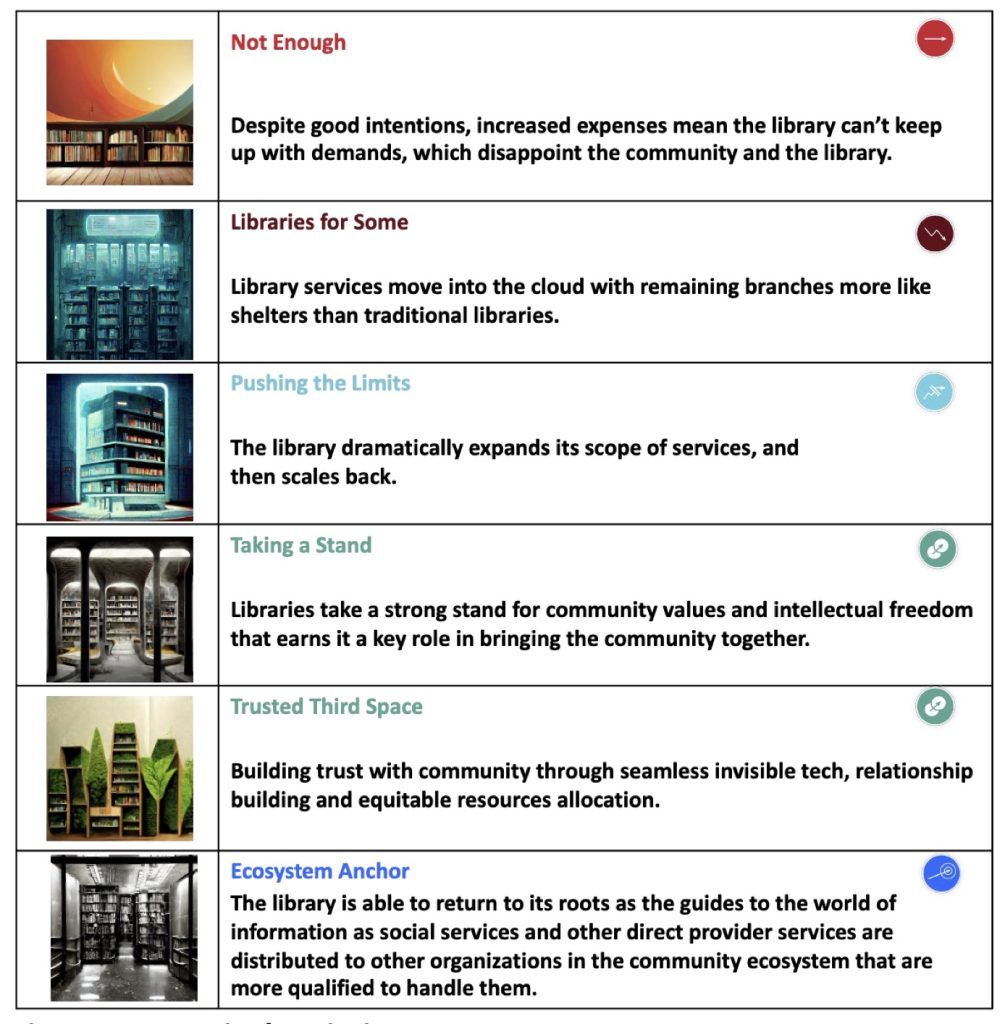
It’s a fascinating type of interstitial planning. Instead of just throwing a plan into the water and seeing if it will float, the future study asked a couple important questions about what happens in the meantime. What’s it like if it takes longer to get up on the diving board? Is the water immediately deep? It’s a uniquely thoughtful approach that really highlights the gaps in many other plans. Yes, the goal is worthy, but can we maintain our values as we get to that end result. What happens if we don’t?
Those mid-point futurist check-ins appear to be translating to the new Strategic Direction. SPL’s new plan is expected to identify near-term goals and objectives for the next one to three years and longer-term goals and objectives for years four through 10. The Foresight report also identified questions about whether pursuing a single preferred scenario is better than supporting common attributes of several scenarios. It will be interesting to see how much of that appears in the library’s draft documents when they open for public perusal later this year.
Of course, the library’s planning is not happening in a vacuum as Seattle is undertaking its own comprehensive planning process at the moment. Gentry says there are members of the library plan’s core team working with the Office of Planning and Community Development to coordinate between the processes. “Our draft plan is expected to be released later this year as well, but it won’t be finalized until after the first of the year. We do, though, have a window of opportunity to incorporate elements of our plan into the comprehensive plan. And so that’s what our hope is.”
Even with all this talk about threats to the future of libraries from censorship and security and technology, one cannot step away from these studies without a feeling that we have a good thing going with Seattle’s libraries. Gentry sees that too. “What we sort of came to as the conclusion, both for staff, stakeholders, and for partners, was that the library’s that community hub, a community connector. Those are really strong identity profiles for the organization that we should be focused on.”
So far, by recognizing the many things that may knock it off track, the Seattle Public Library’s Strategic Direction appears it’s heading toward that goal.
Ray Dubicki is a stay-at-home dad and parent-on-call for taking care of general school and neighborhood tasks around Ballard. This lets him see how urbanism works (or doesn’t) during the hours most people are locked in their office. He is an attorney and urbanist by training, with soup-to-nuts planning experience from code enforcement to university development to writing zoning ordinances. He enjoys using PowerPoint, but only because it’s no longer a weekly obligation.

